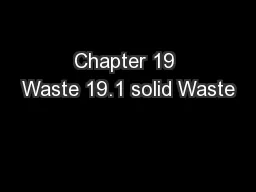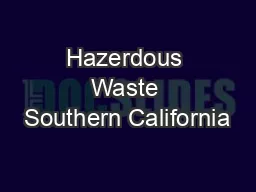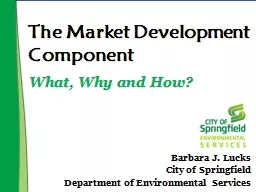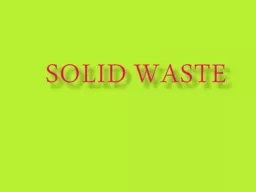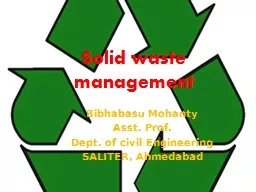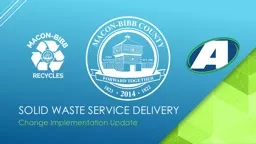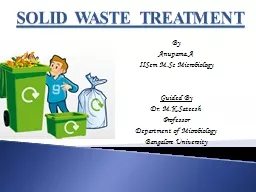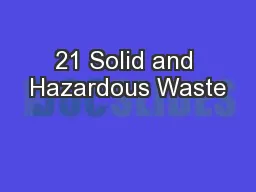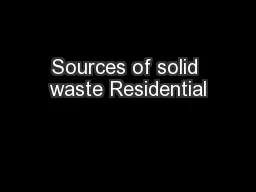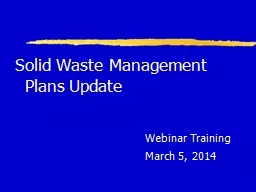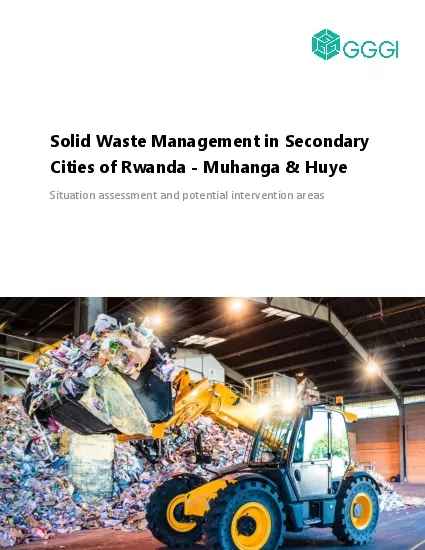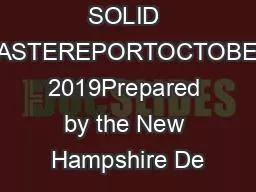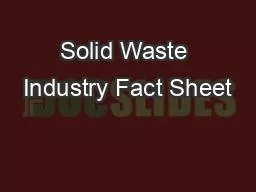PPT-Chapter 19 Waste 19.1 solid Waste
Author : test | Published Date : 2018-11-08
192 Reducing Solid Waste 193 Hazardous Waste p 480503 1 Key Terms Solid waste Biodegradable Municipal solid waste Landfill Leachate Source reduction Recycling Compost
Presentation Embed Code
Download Presentation
Download Presentation The PPT/PDF document "Chapter 19 Waste 19.1 solid Waste" is the property of its rightful owner. Permission is granted to download and print the materials on this website for personal, non-commercial use only, and to display it on your personal computer provided you do not modify the materials and that you retain all copyright notices contained in the materials. By downloading content from our website, you accept the terms of this agreement.
Chapter 19 Waste 19.1 solid Waste: Transcript
Download Rules Of Document
"Chapter 19 Waste 19.1 solid Waste"The content belongs to its owner. You may download and print it for personal use, without modification, and keep all copyright notices. By downloading, you agree to these terms.
Related Documents

